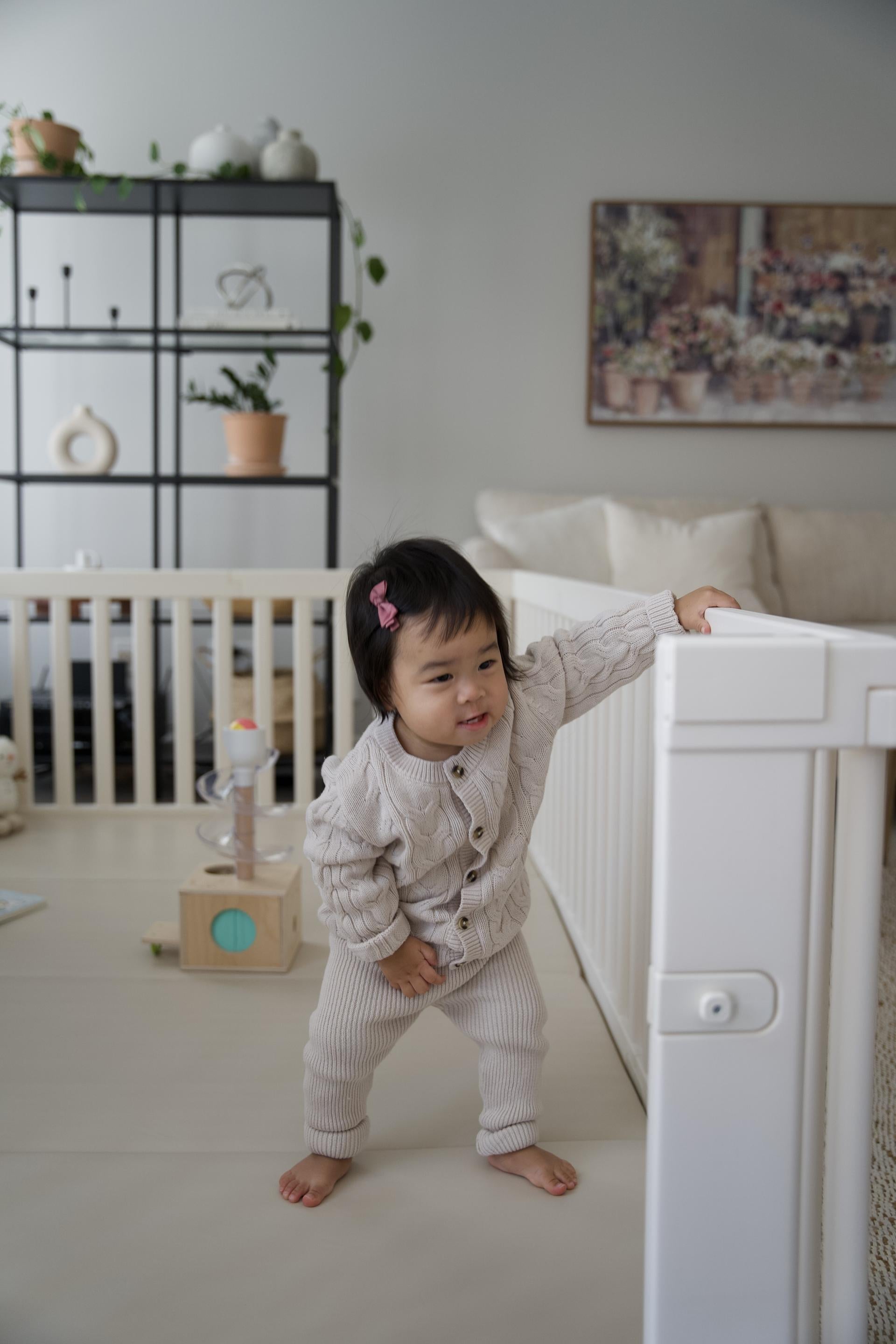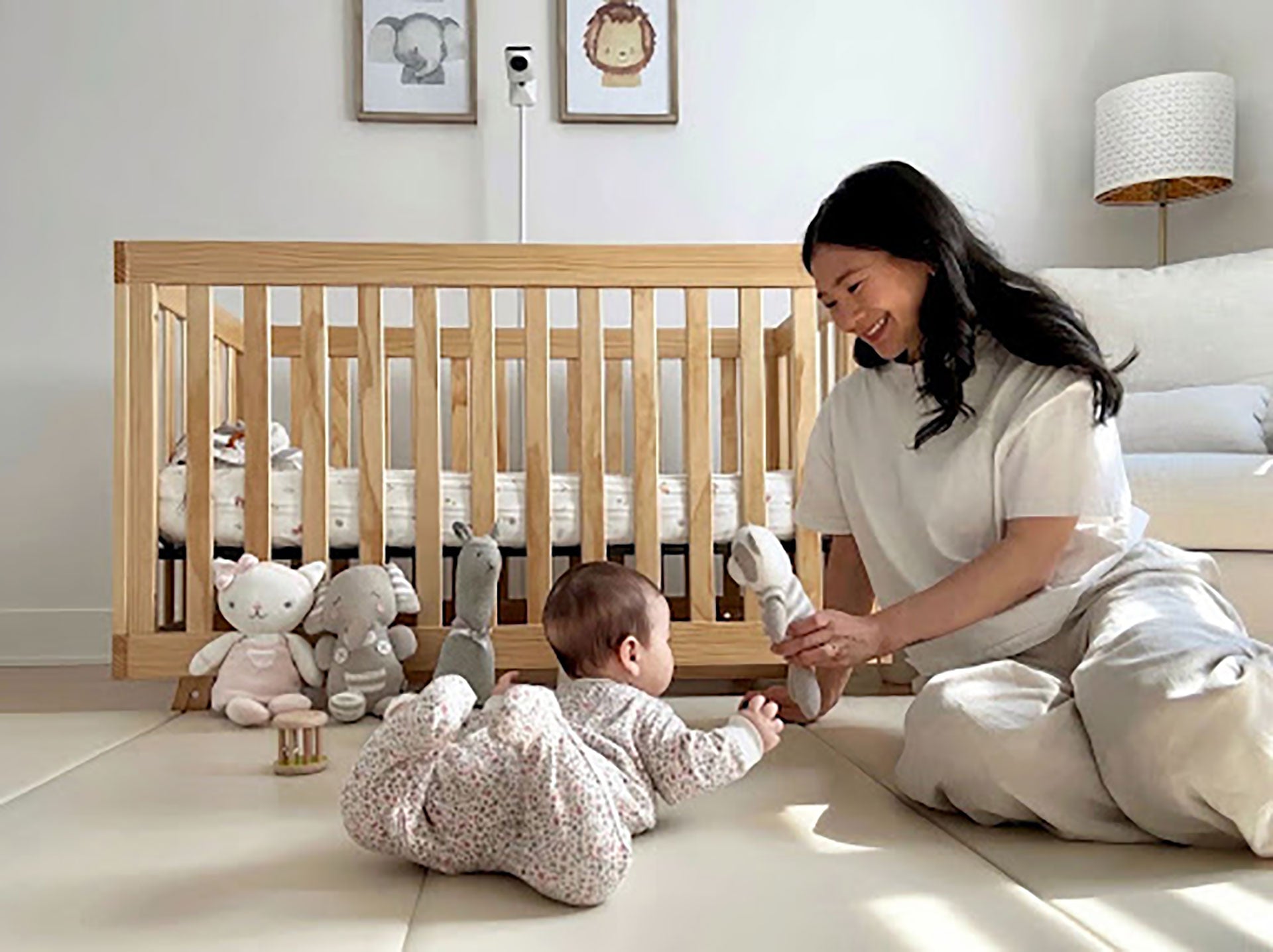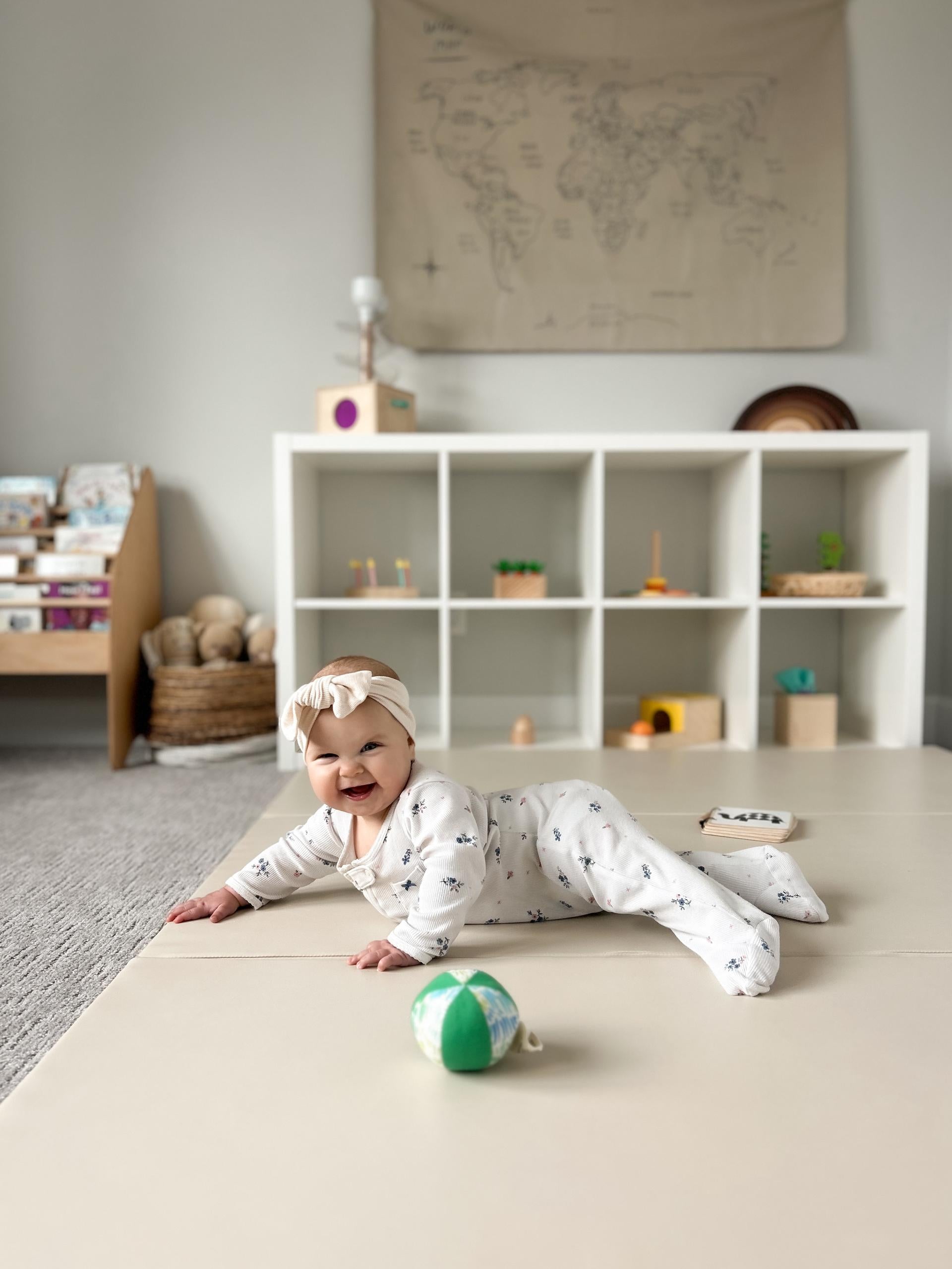
Your Guide to Baby Proofing: How to Baby Proof Your House
Welcoming a newborn baby into your home is one of life’s most celebrated milestones. Bringing your little one to their new nursery and introducing them to their new surroundings is a moment you will never forget.
As you welcome your little one home, it's important to bring them into a space where they’re safe and can feel at ease—and that’s where baby-proofing comes in. From the moment your baby starts to crawl and those special newborn stages, their curiosity will encourage them to explore every nook and cranny in the home, which means staying proactive and ready to anticipate those moments is essential.
In this guide, we'll take you through the essential steps to baby-proofing your home, with practical tips and advice for each room. Whether you're a first-time parent or simply need a refresher, our comprehensive guide will help you create a safe haven for your little one.
What is Baby Proofing?
First, let’s take a moment to understand the definition and nuances of what baby proofing is. Baby proofing involves identifying and addressing potential hazards in your home to create a safe environment for your baby to explore and grow.
This can involve a wide range of measures, from securing furniture to covering sharp corners and edges. It involves restricting areas such as kitchens and stairs using baby gates, learning how to close a playpen during those crawling stages, and ultimately anticipating and eliminating the potential risks that come with your little one learning how to navigate their surroundings.
How to Baby Proof Your House: The Basics
When it comes to babyproofing, the basics are the best place to start. Here’s how you can begin the baby-proofing process:
Complete a home safety audit: Get down on your hands and knees to see your home from your baby's perspective.
Designate a safe play area: Create a space with your Wunderkids play mat where your little one can explore freely without encountering hazards.
Install safety gates: Use safety gates to block off areas like stairs and the kitchen to prevent falls and access to dangerous areas.
Use corner protectors and edge guards: Cover sharp edges and corners to prevent injuries during those first steps.
Secure electrical outlets: Install outlet covers to keep curious fingers away from potential shocks.
This basic baby-proofing checklist can help you take the initial steps to create a safe environment for your little one to learn and grow.
Your Room-by-Room Baby-Proofing Checklist
As your little one begins to explore their surroundings, every room in your home is both an exciting new adventure and a potential hazard. For these reasons, it’s important to baby-proof every major room in your home.
Because baby-proofing your house isn’t a one-size-fits-all process, we’ve put together a comprehensive baby-proofing checklist to help you get started.
Nursery
- Ensure your nursery has age-appropriate toys, especially when your little one is engaging in tummy time and learning how to reach and grab the toys around them.
- Secure changing tables and other nursery furniture to avoid tripping accidents and ensure no heavy items are placed on top.
- Keep baby monitors and other electronic devices out of reach.
- When looking for a non-toxic play mat for babies, check for environment certifications and hypoallergenic properties to ensure your little one can take full advantage of their space.

Living Room
- Anchor bookshelves, TV stands, and other heavy furniture to prevent tripping accidents.
- Use edge guards and corner protectors to cushion the sharp corners of your tables and other furniture.
- Keep small objects like remote controls and decorative objects out of reach.
- Cover your electrical outlets to prevent access.
Kitchen
- Use childproof locks on cabinets and drawers to prevent access to sharp objects and cleaning products.
- Keep the chemicals you use when cleaning a play mat in locked cabinets, either with safety latches or placed in high cabinets that are inaccessible to your little one.
- Install knob covers to prevent accidentally turning on the stove or oven.
- Use a trash can with a childproof lid, or keep your garbage in a cabinet with a safety lock.
Bathroom
- Install toilet locks and keep toilet lids closed when not in use.
- Store any toiletries and medications in locked cabinets or high shelves that are out of reach.
- Use non-slip bath mats in the bathtub and on the floor.
- Set your water heater to a safe temperature to avoid any burns.
Bedrooms
- Secure heavy furniture, such as dressers and wardrobes, to the wall.
- Keep cords from curtains and blinds out of reach.
- If your little one’s crib is in your bedroom, ensure the crib mattress is at the proper height to prevent any falls.
Baby Proofing Your House at Different Ages and Stages
As your little one grows up and begins to experiment with stages like crawling or baby led weaning, there are special considerations and adjustments that should be made when going through your baby-proofing checklist.
Newborns to 6 months
- Focus mainly on ensuring your newborn sleeps on their back in their crib on a firm mattress and fitted sheet. Avoid any loose bedding or toys.
- During tummy time, invest in a soft, hypoallergenic Wunderkids play mat. This mat offers infants a safe, cushioned space to develop their motor skills and cognitive functions.
- Keep a close eye on the products on your baby’s skin and clean their toys and play mats. Avoid any toxins in baby products by buying organic products or items that are certified safe to use on children.
6 to 12 months
- As your little one begins to explore more independently, ensure your furniture is secured and any tripping hazards are eliminated.
- Keep small objects out of reach and cover sharp edges with safety guards.
- Introduce safety gates around stairs and block off areas you don’t want them to explore.

Toddlers
- In addition to covering sharp edges, anchoring furniture and installing baby gates, use door knob covers to avoid your little one accessing off-limit areas.
- Start teaching safety rules and boundaries, and emphasize positive reinforcement when safe behaviour is applied.
Baby Proofing Starts with Wunderkids
Baby proofing is an integral part of the parenthood journey, and Wunderkids is here to help you create the safest, most engaging spaces for your little one to enjoy.
With our selection of non-toxic play mats and safe and durable playpens for babies, we help parents and caregivers create spaces where tummy time can shine and where infants can build those developmental skills without compromising their safety or comfort.



